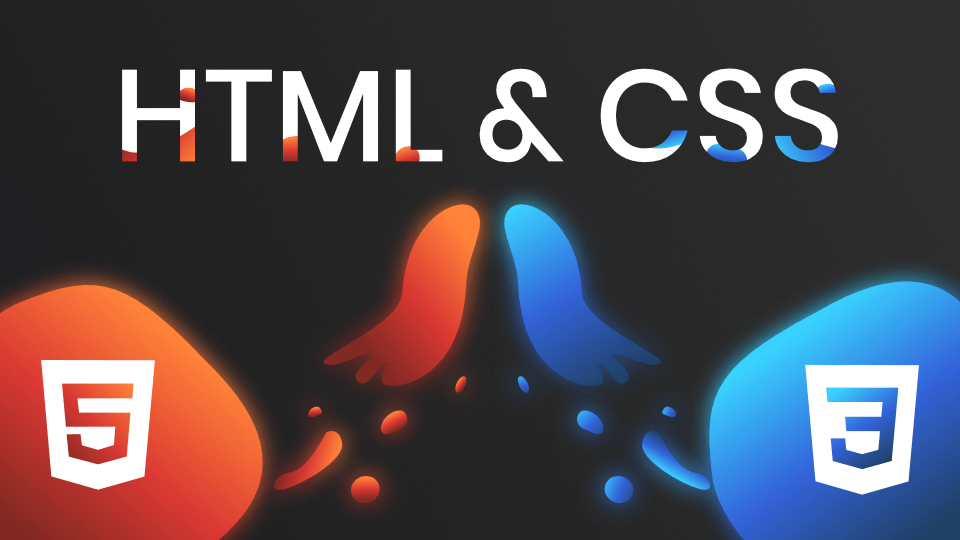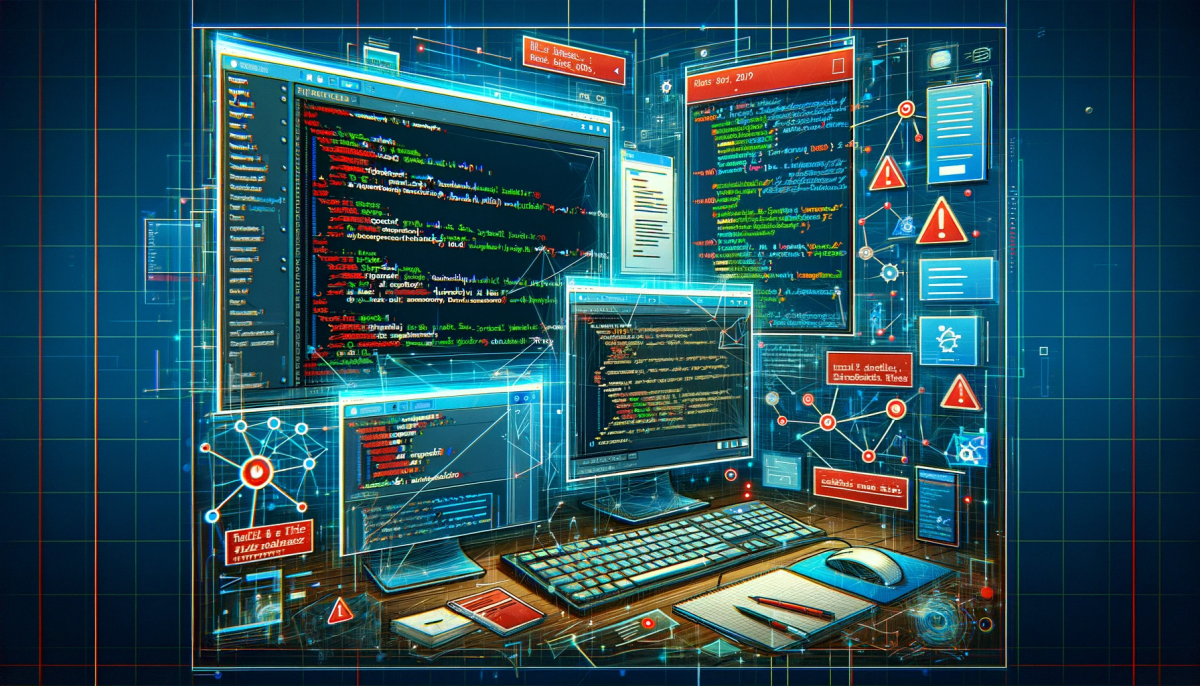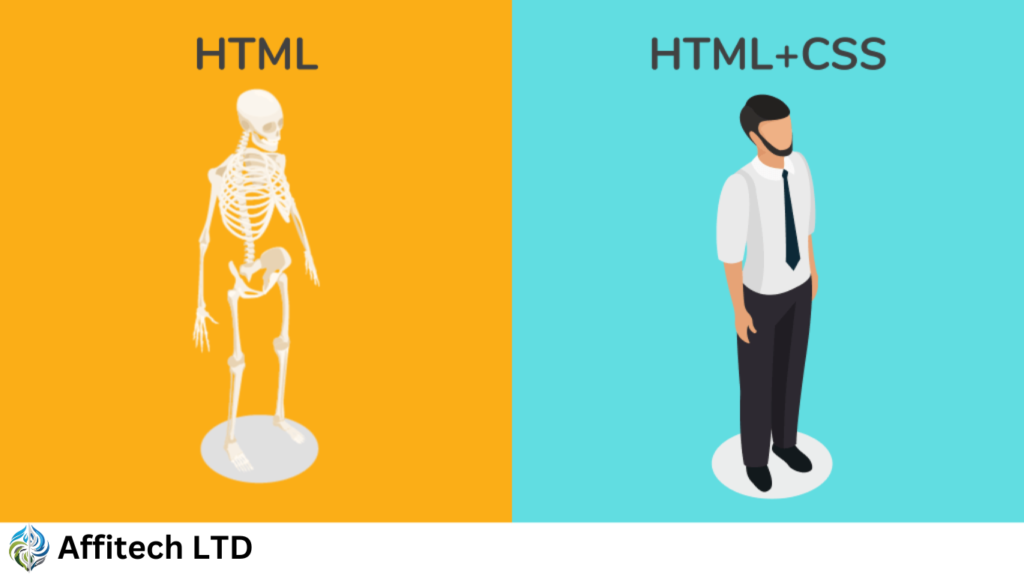
Understanding HTML and CSS: The Basics for High School Students
Imagine you’re building a house. You need a blueprint to plan where each room goes, what the house will look like, and how everything fits together. In the world of websites, HTML (HyperText Markup Language) and CSS (Cascading Style Sheets) are like that blueprint. They help you create and design websites, making sure they look good and work well.
HTML: The Structure of a Website
Think of HTML as the framework or structure of a website, much like the skeleton of a house. HTML is a language used to create and organize the content on a webpage. When you write HTML, you’re setting up the basic elements like text, images, links, and headings.
Here are some key parts of HTML:
- Tags: HTML uses special codes called tags to define different parts of a webpage. For example,
<h1>is a tag for the biggest heading, while<p>is used for paragraphs. Tags are enclosed in angle brackets like this:<tagname>. There are also closing tags, which look like this:</tagname>. - Elements: Tags work together to form elements. For instance,
<p>This is a paragraph.</p>is a paragraph element. It starts with<p>, has content in between, and ends with</p>. - Attributes: Tags can also have attributes that provide more details. For example,
<img src="image.jpg" alt="A cool picture">usessrcto specify the image file andaltto provide a description of the image.
CSS: The Style of a Website
While HTML is about structure, CSS is all about design. It’s like choosing the paint colors, flooring, and decorations for your house. CSS (Cascading Style Sheets) lets you control how the HTML content looks. It makes your website visually appealing and ensures it fits your design vision.
Here are some basics of CSS:
- Selectors: CSS uses selectors to target HTML elements you want to style. For example,
pselects all paragraph elements. You can also use more specific selectors to target elements with certain classes or IDs. - Properties and Values: Once you’ve selected an element, you can change its appearance using properties and values. For instance,
color: red;changes the text color to red. You can set properties for things like font size, margins, padding, and more. - Classes and IDs: You can apply styles to multiple elements with the same class or to a single element with a unique ID. For example,
.highlight { background-color: yellow; }applies a yellow background to all elements with the class “highlight”. On the other hand,#header { font-size: 24px; }targets the element with the ID “header” and changes its font size.
Why HTML and CSS are Important
- Foundation of the Web: Almost every website you visit uses HTML and CSS. They’re fundamental technologies for creating web pages and are essential for anyone interested in web development.
- Easy to Learn: HTML and CSS are relatively simple compared to other programming languages, making them accessible for beginners. They’re great starting points for learning about web development.
- Creativity and Functionality: HTML allows you to structure content, while CSS lets you style it. Together, they let you create both functional and beautiful websites. Whether you’re designing a personal blog or a professional portfolio, mastering these tools is key.
- Career Opportunities: Understanding HTML and CSS can open doors to various careers in technology, such as web development, graphic design, and digital marketing. It’s a valuable skill in today’s digital world.
In summary, HTML and CSS are essential for building and designing websites. HTML provides the structure, while CSS handles the style. Learning these languages gives you the tools to create your own websites and is a great starting point for exploring the world of web development.

Debugging: Understanding and Fixing Errors in Code
Debugging is like solving a puzzle when something isn’t working right in your code. It’s a crucial part of programming and involves finding and fixing errors, or “bugs,” to ensure that your software or website runs smoothly.
What is Debugging?
Debugging is the process of identifying, isolating, and correcting problems in your code. Bugs can range from simple syntax errors to complex logical mistakes that cause your program to behave unexpectedly. The goal is to make sure your code does what you intend it to do without any issues.
Common Debugging Techniques:
- Reading Error Messages: When your code doesn’t work, the computer usually provides error messages. These messages can point you to the exact location and nature of the problem. For example, if you see an error saying “undefined variable,” it means you’ve used a variable that hasn’t been defined.
- Using Print Statements: Adding print statements to your code can help you understand what’s happening at different stages. For example, you can print out the values of variables to see if they are what you expect.
- Stepping Through Code: Most programming environments have debugging tools that let you step through your code one line at a time. This helps you see exactly where the problem occurs and how the code executes.
- Checking Code Logic: Sometimes the code runs without errors but doesn’t work as expected. In such cases, review your logic. Ensure that your code follows the correct sequence and that all conditions and loops are correctly set up.
- Consulting Documentation: Sometimes, bugs arise from misunderstandings about how certain functions or methods work. Refer to the documentation or help files for guidance.
Why Debugging is Important:
- Ensures Functionality: Debugging ensures that your code works correctly and as intended, providing a smooth user experience.
- Improves Learning: Debugging helps you learn more about programming and problem-solving by making you think critically about your code.
- Saves Time: Fixing bugs early prevents problems from escalating, saving time and effort in the long run.
In summary, debugging is a vital skill for programmers. It involves finding and fixing errors in your code using various techniques and tools. Mastering debugging helps ensure your code runs correctly and efficiently.
To start programming, you need a few basics:
- A Computer: Any modern computer will do, whether it’s a laptop or desktop.
- Text Editor or IDE: Software like Visual Studio Code, Sublime Text, or even Notepad can help you write code. IDEs like PyCharm or WebStorm offer more features.
- Programming Language Knowledge: Choose a language based on your goals. Python is great for beginners, while HTML and CSS are essential for web development.
- Learning Resources: Use online tutorials, courses, and documentation to guide your learning.
- Practice: Regular coding and debugging will improve your skills over time.

